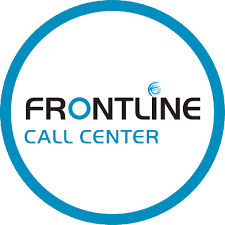The Infrastructure Bill is being signed on Monday: What’s In It For You?
By Kathy Herndon, CPA, PFS, CDFA, MST, CExP
The long-awaited $1 trillion Infrastructure Investment and Jobs Act (IIJA) is scheduled for a White House signing ceremony on November 15, at the White House. It includes funding for improvements to highways, bridges, and other road safety measures. The bill is a long-term solution that will take years not months to see the impact. It also offers plans to reconnect communities previously divided by highway building and expand national broadband networks.
According to White House projections, investments outlined in the infrastructure act will add approximately 2 million jobs per year over the next decade. The demand for labor and related supply chains will have profound impacts on an already challenging environment. Keep a close watch on already stressed global supply chains, the competition between government and private business, its going to be interesting!
A portion of the original bill was held back, and there were not as many tax provisions as originally expected, which could mean additional changes may be coming in a fiscal year 2022 budget reconciliation.
What’s in the $1T Infrastructure Act?
There are several key tax provisions found in the IIJA.
• Employee Retention Credit: The infrastructure act ends the employee retention credit (ERC) early, repealing the fourth-quarter extension. Wages paid after September 30, 2021, are ineligible for the credit unless paid by an eligible recovery startup business.
• Crypto asset Reporting: The IIJA clearly defines the terms broker and digital assets to clarify capital gains or losses from cryptocurrency. It also provides new reporting requirements for crypt currency exchanges to the IRS.
• Disaster relief: The IIJA modifies the automatic extension of specific deadlines for taxpayers impacted by federally declared disasters. It amends the definition of a disaster area as “an area in which a major disaster for which the President provides financial assistance under section 408 of the Robert T. Stafford Disaster Relief and Emergency Assistance Act (42 U.S.C. 5174) occurs.”
Other Tax Provisions:
• Extension of highway-related taxes
• Extension and modification of superfund excise taxes
• Allowance of private activity bonds for qualified broadband projects and carbon dioxide capture facilities
What Else is Included?
Here’s a breakdown of what’s included:
• Roads and bridges: $110 billion to repair the nation’s highways, bridges, and roads and invest in other transportation programs.
• Public transit: $39 billion to expand and modernize transportation systems, improve access for people with disabilities, provide dollars to state and local governments to purchase zero-emission buses, and repair buses, rail cars, and train tracks.
• Passenger and freight rail: $66 billion to reduce Amtrak’s maintenance backlog and improve rail service routes, including the Northeast Corridor.
• Electric vehicles: $7.5 billion for electric vehicle charging stations, $5 billion to purchase electric buses, and $2.5 billion for ferries.
• Modernizing the electric grid: $65 billion to protect against power outages.
• Airports: $25 billion to improve runways, gates, taxiways, terminals, and air traffic control towers.
• Water and wastewater: $55 billion to spend on water and wastewater infrastructure, including replacing lead pipes and addressing water contamination.
• Broadband internet: $65 billion to bolster the country’s broadband infrastructure, including ensuring every American has access to high-speed internet. Additionally, one in four households is expected to become eligible for a $30 per month subsidy to pay for internet access.
• Great Lakes Restoration Initiative: $1 billion for the cleanup of rivers and lakes, including a special target of areas with heavy industrial pollution.
• Road safety: $11 billion for transportation safety programs.
Where does the Build Back Better plan stand?
The BBB is set to be the largest social policy bill brought to a vote in recent years, bringing much-needed funding to address issues such as climate change, health, education, and paid family and medical leave. The overall plan is intended to rebuild the middle class.
The Build Back Better plan and IIJA have many intricate details. We’ll continue to provide more information as it becomes available. As business advisors, we are anticipating the changes to tax law that still need to be finalized in the coming weeks and clarification on effective dates.



